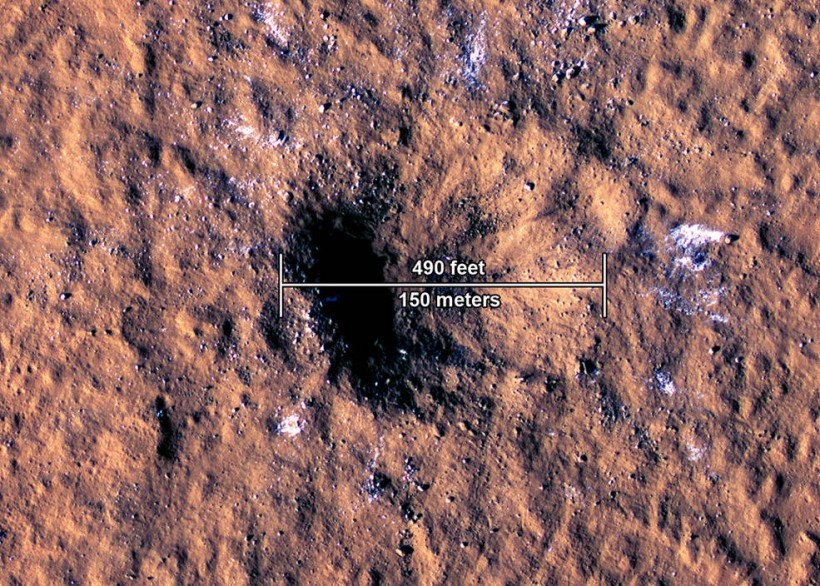Scientists have, for the first time, seen seismic waves moving over the surface of a planet other than Earth after two significant meteorite strikes on Mars. The InSight lander from NASA captured the marsquake data, which the InSight Science Team and ETH Zurich then examined. It offers a new understanding of the Martian crust's composition.
For over three years, the only seismic waves InSight Lander picked up on Mars were those that moved from each earthquake's epicenter, or hypocenter, through the planet's interior. However, the scientists hoped for a phenomenon that would also cause waves to move throughout the planet's surface. On December 24, 2021, a significant meteorite impact on Mars produced the kind of surface ripples scientists had long awaited.
Studies Find Weird Seismic Waves on Mars After Martian Meteorite Incident
The recent Marsquake, which occurred and generated seismic waves due to the meteorite's impact on the planet, was the focus of a study undertaken by ETH Zurich. The research team's findings are described in the report "Surface waves and crustal structure on Mars," released on October 27.
For a considerable time, the InSight Science Team, the firsthand source on Mars, supplied information and data from the InSight lander.
The spacecraft studied these seismic waves, whose activity is strongly felt across the area, to aid with data collection.
The study further clarified that these seismic waves are only detectable at the collision site and not globally. However, the most recent meteorite impacts on Mars captured new data and information that caused waves to travel throughout the planet's surface.
It was discovered that it goes to other regions of Mars after the most recent impact, which occurred in December 2021, according to SciTechDaily.

The impact crater, formed Dec. 24, 2021, by a meteoroid strike in the Amazonis Planitia region of Mars, is about 490 feet (150 meters) across, as seen in this annotated image taken by the High-Resolution Imaging Science Experiment (HiRISE camera) aboard NASA’s Mars Reconnaissance Orbiter.
ALSO READ: NASA's InSight Lander Finds Meteoroid on Mars During Christmas Eve Last Year
NASA InSight Lander to Die Soon
There is always a feeling of loss when a daring space mission ends. Still, NASA InSight crew may find solace in the lander's outstanding scientific achievements over the course of nearly four years on Mars. NASA said on Tuesday that InSight's mission would likely finish within the coming weeks.
A recent local dust storm, dust-covered solar panels, and waning electricity are all factors in the looming goodbye. The InSight team prioritized the seismometer's operation, which detects marsquakes while turning off sensors to deal with the power drain. "We're pushing it to the very end," said InSight team member Liz Barrett (per CNet).
A recent local dust storm, dust-covered solar panels, and waning electricity are all factors in the looming goodbye. The InSight team prioritized the seismometer's operation, which detects marsquakes while turning off sensors to deal with the power drain.
RELATED ARTICLE: NASA Jet Propulsion Laboratory Announces Largest Extraterrestrial Earthquake Detected by InSight Lander on Mars
Check out more news and information on Mars in Science Times.














